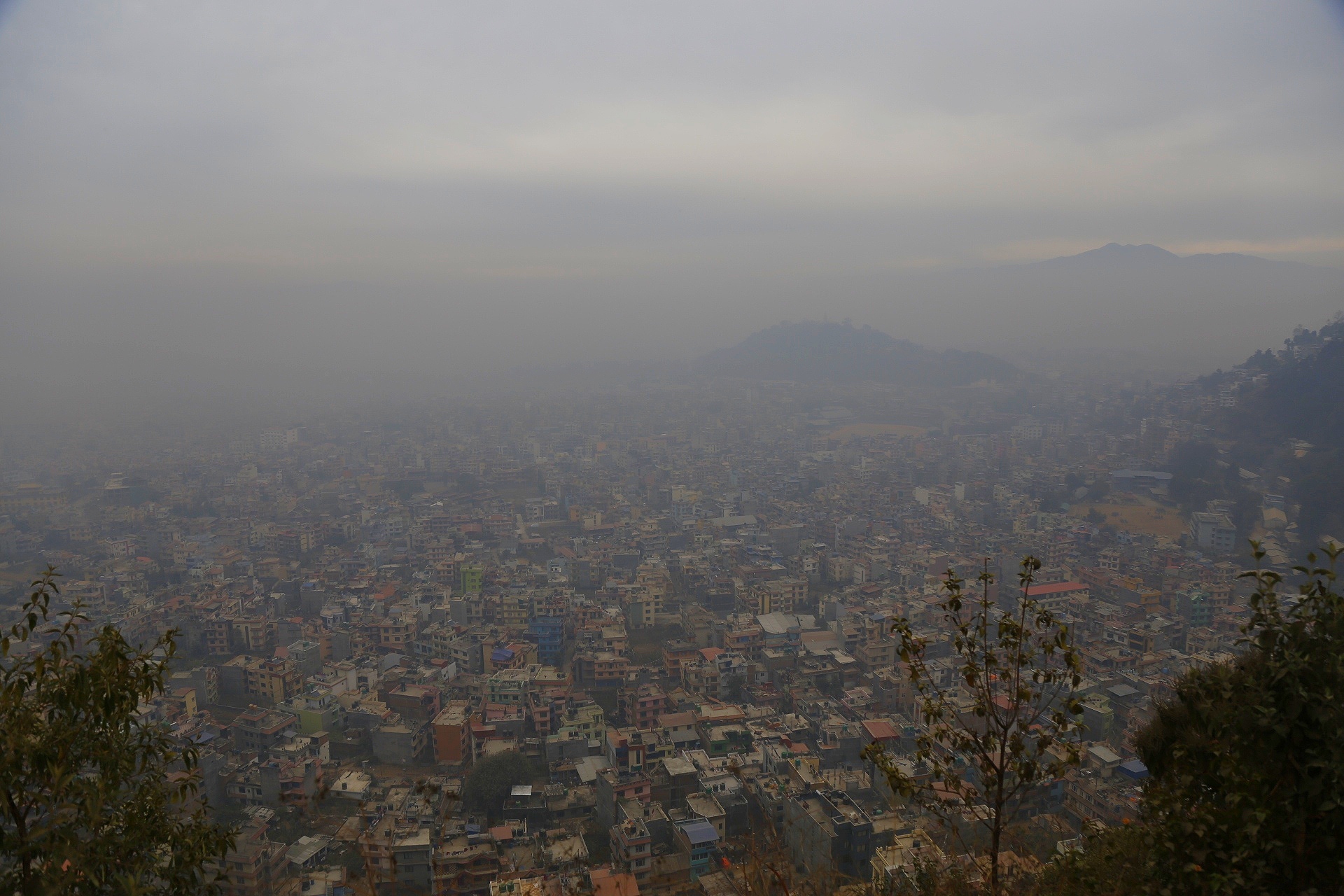Report on Urban Heat Impact on Public School Students in Major U.S. Cities with Emphasis on Sustainable Development Goals (SDGs)
Key Facts
- The planet is warming due to human-induced climate change, with urban built environments exacerbating average temperatures and extreme heat.
- Heat poses significant health risks, especially to children, who are more vulnerable to heat-related illnesses.
- Climate Central analyzed the intersection of urban heat islands and public schools in the 65 largest U.S. cities, covering over 12,000 K-12 public schools and nearly 6.2 million students.
- Approximately 76% of these students attend schools in extreme urban heat islands, defined as neighborhoods where the built environment adds at least 8°F of additional heat.
- The average student experiences an 8.3°F increase in temperature due to urban heat island effects.
- In nearly one-quarter of the cities analyzed, 90% of students attend schools in extreme urban heat zones.
- Maintaining safe and cool school environments is an increasing challenge amid global warming.
Urban Heat and Public Schools: Analysis and Findings
Urban Heat Island Effect and Its Impact on Students
The urban heat island (UHI) effect, as defined by the U.S. Environmental Protection Agency, is a measurable increase in ambient urban air temperatures primarily caused by replacing vegetation with buildings, roads, and other heat-absorbing infrastructure. This phenomenon, combined with climate change, disproportionately affects vulnerable populations, including children.
Scope of Analysis
- Study area includes 65 largest U.S. cities, home to 50 million people (15% of the U.S. population).
- 12,021 K-12 public schools analyzed, with 6.2 million enrolled students.
- Extreme urban heat zones defined as census block groups with UHI index ≥ 8°F.
Key Statistics
- 76% (4,680,558) of students attend schools in extreme urban heat zones.
- 96% of students experience between 6°F and 11°F additional heat due to urban heat islands.
- The average temperature increase experienced by students is 8.3°F, ranging from 7.3°F in Phoenix, AZ to 9.6°F in New York City.
- More than half of students in 62 out of 65 cities attend schools in extreme heat zones.
- Top cities with highest percentages include Louisville, KY (98%), Wilkes Barre, PA (97%), and Orlando, FL (97%).
- The largest cities have the highest numbers of students affected, with New York City having 819,719 students (85%) in extreme heat zones.
Health and Educational Implications
Heat-Related Risks to Children
- Heat is the deadliest weather-related hazard in the U.S., with children aged 0-17 among the most vulnerable.
- Extreme heat negatively impacts children’s health, development, sleep, mood, concentration, and academic achievement.
- 82% of U.S. public schools offer summer programs during the hottest months, increasing exposure risk.
- Urban heat islands exacerbate heat stress, increase energy demand, and strain power grids.
- Heat exposure disproportionately affects lower-income and non-white communities, linked to historical housing discrimination.
Cooling Infrastructure Challenges
- Cooling demand during back-to-school periods has increased since 1970, driven by climate change.
- 41% of public school districts need to replace or update HVAC systems in at least half of their schools.
- Most U.S. public schools are approximately 50 years old and not designed for current climate conditions.
- Increased cooling needs will raise maintenance and operational costs.
Outdoor Heat Exposure
- Extreme heat affects students during outdoor activities such as playground use and sports.
- Children sweat less and acclimate more slowly to heat, increasing risk during outdoor exposure.
- Heat events are occurring more frequently and extending into school months beyond summer.
Recommendations for Protecting Students and Advancing SDGs
Protective Measures for Children
- Monitor temperature and heat risk forecasts; heed heat advisories and warnings.
- Avoid outdoor activities during peak heat hours, typically midday.
- Schedule frequent breaks in shaded or air-conditioned areas.
- Ensure adequate hydration during outdoor play and sports.
- Recognize symptoms of heat-related illness and be prepared to act promptly.
Policy and Infrastructure Actions
- Invest in upgrading school cooling infrastructure to ensure safe learning environments.
- Implement urban planning strategies to increase green spaces and tree canopy to mitigate urban heat islands.
- Develop and enforce heat action plans targeting vulnerable communities, addressing equity concerns.
- Promote rapid and sustained reductions in carbon emissions to slow global warming and reduce heat risks.
Alignment with Sustainable Development Goals (SDGs)
- SDG 3: Good Health and Well-being — Reducing heat-related health risks among children supports healthy lives and promotes well-being.
- SDG 4: Quality Education — Ensuring safe and comfortable school environments enhances learning outcomes and educational equity.
- SDG 10: Reduced Inequalities — Addressing disproportionate heat impacts in marginalized communities promotes social inclusion and equity.
- SDG 11: Sustainable Cities and Communities — Mitigating urban heat islands through green infrastructure and urban planning fosters resilient and sustainable cities.
- SDG 13: Climate Action — Committing to carbon pollution reduction and climate adaptation measures aligns with urgent climate action goals.
Understanding Urban Heat Island Drivers
Main Factors Influencing Urban Heat Islands
- Albedo: Low reflectivity of hard, dark surfaces such as roads and buildings increases heat absorption and radiation.
- Green Space: Vegetation cools air through evapotranspiration; lack of greenery reduces cooling effects.
- Population Density: Human activities and energy use contribute additional heat, including heat from air conditioning units.
Other factors such as street width, urban canyon orientation, and building heights have smaller impacts.
Local and Expert Resources
Local Story Angles
- Investigate your city’s heat action plans and resources for vulnerable populations during heat waves.
- Assess city parks and green spaces using tools like the Trust For Public Land’s ParkScore to understand urban heat mitigation efforts.
Access to Experts
- Use services such as SciLine and Climate Data Concierge for expert connections.
- Explore regional climate expert databases and diverse expert networks to amplify informed voices.
- Engage with State Climate Offices and Land-Grant Universities for local scientific support.
Methodology Summary
This analysis is based on a 2024 Climate Central study calculating the Urban Heat Island (UHI) index across 37,094 census block groups in 65 large U.S. cities, representing over 50 million people. The UHI index estimates additional heat contributed by urban land use factors. Public school data from the 2022-23 school year was integrated to assess heat exposure among 6.2 million K-12 students. Extreme urban heat zones were defined as areas with a UHI index of 8°F or higher.
Conclusion
Urban heat islands significantly increase heat exposure for millions of public school students in major U.S. cities, posing serious health and educational challenges. Addressing these issues through infrastructure improvements, equitable urban planning, and climate action is critical to achieving multiple Sustainable Development Goals and safeguarding the well-being and future of younger generations.
1. Sustainable Development Goals (SDGs) Addressed or Connected
- SDG 3: Good Health and Well-being – The article highlights heat-related health risks, especially for children, emphasizing the need to protect vulnerable populations from extreme heat impacts.
- SDG 4: Quality Education – It discusses the impact of extreme heat on students’ ability to learn and the importance of keeping schools safe and cool for effective education.
- SDG 11: Sustainable Cities and Communities – The urban heat island effect and its amplification of heat in cities are central themes, focusing on urban environments and their sustainability.
- SDG 13: Climate Action – The article addresses human-caused climate change as the root cause of rising temperatures and stresses the need for rapid carbon pollution cuts.
- SDG 10: Reduced Inequalities – It mentions disproportionate heat burdens on lower-income and non-white communities, linking to social and environmental equity issues.
- SDG 6: Clean Water and Sanitation (implied) – The recommendation for children to drink enough water during heat exposure relates indirectly to access to clean water.
2. Specific Targets Under Identified SDGs
- SDG 3: Good Health and Well-being
- Target 3.9: Reduce the number of deaths and illnesses from hazardous chemicals and air, water and soil pollution and contamination.
- Target 3.d: Strengthen the capacity of all countries for early warning, risk reduction and management of national and global health risks.
- SDG 4: Quality Education
- Target 4.a: Build and upgrade education facilities that are child, disability and gender sensitive and provide safe, non-violent, inclusive and effective learning environments.
- SDG 11: Sustainable Cities and Communities
- Target 11.2: Provide access to safe, affordable, accessible and sustainable transport systems for all.
- Target 11.3: Enhance inclusive and sustainable urbanization and capacity for participatory, integrated and sustainable human settlement planning and management.
- Target 11.6: Reduce the adverse per capita environmental impact of cities, including by paying special attention to air quality and municipal and other waste management.
- Target 11.b: Increase the number of cities adopting and implementing integrated policies and plans towards inclusion, resource efficiency, mitigation and adaptation to climate change.
- SDG 13: Climate Action
- Target 13.1: Strengthen resilience and adaptive capacity to climate-related hazards and natural disasters in all countries.
- Target 13.2: Integrate climate change measures into national policies, strategies and planning.
- Target 13.3: Improve education, awareness-raising and human and institutional capacity on climate change mitigation, adaptation, impact reduction and early warning.
- SDG 10: Reduced Inequalities
- Target 10.2: Empower and promote the social, economic and political inclusion of all, irrespective of age, sex, disability, race, ethnicity, origin, religion or economic or other status.
3. Indicators Mentioned or Implied to Measure Progress
- Urban Heat Island (UHI) Index – Measures the additional heat contributed by the built environment in urban areas, expressed in degrees Fahrenheit (°F). Used to identify extreme urban heat zones (≥8°F).
- Percentage and Number of Students Attending Schools in Extreme Heat Zones – Quantifies exposure of K-12 public school students to extreme urban heat islands.
- Number of Public Schools with Adequate Cooling Infrastructure – Implied by data on HVAC system needs and school building ages.
- Heat-related Health Outcomes – Implied indicators include heat-related illnesses, emergency room visits, and health impacts on children.
- Access to Green Spaces and Urban Trees – Implied as a mitigating factor for urban heat, linked to urban planning and sustainability indicators.
- Cooling Demand Trends – Increase in cooling demand during back-to-school periods as a proxy for rising heat exposure and adaptation needs.
- Equity Indicators – Distribution of urban heat island effects by income and racial demographics, reflecting inequalities.
4. Table: SDGs, Targets and Indicators
| SDGs | Targets | Indicators |
|---|---|---|
| SDG 3: Good Health and Well-being |
|
|
| SDG 4: Quality Education |
|
|
| SDG 11: Sustainable Cities and Communities |
|
|
| SDG 13: Climate Action |
|
|
| SDG 10: Reduced Inequalities |
|
|
Source: climatecentral.org







